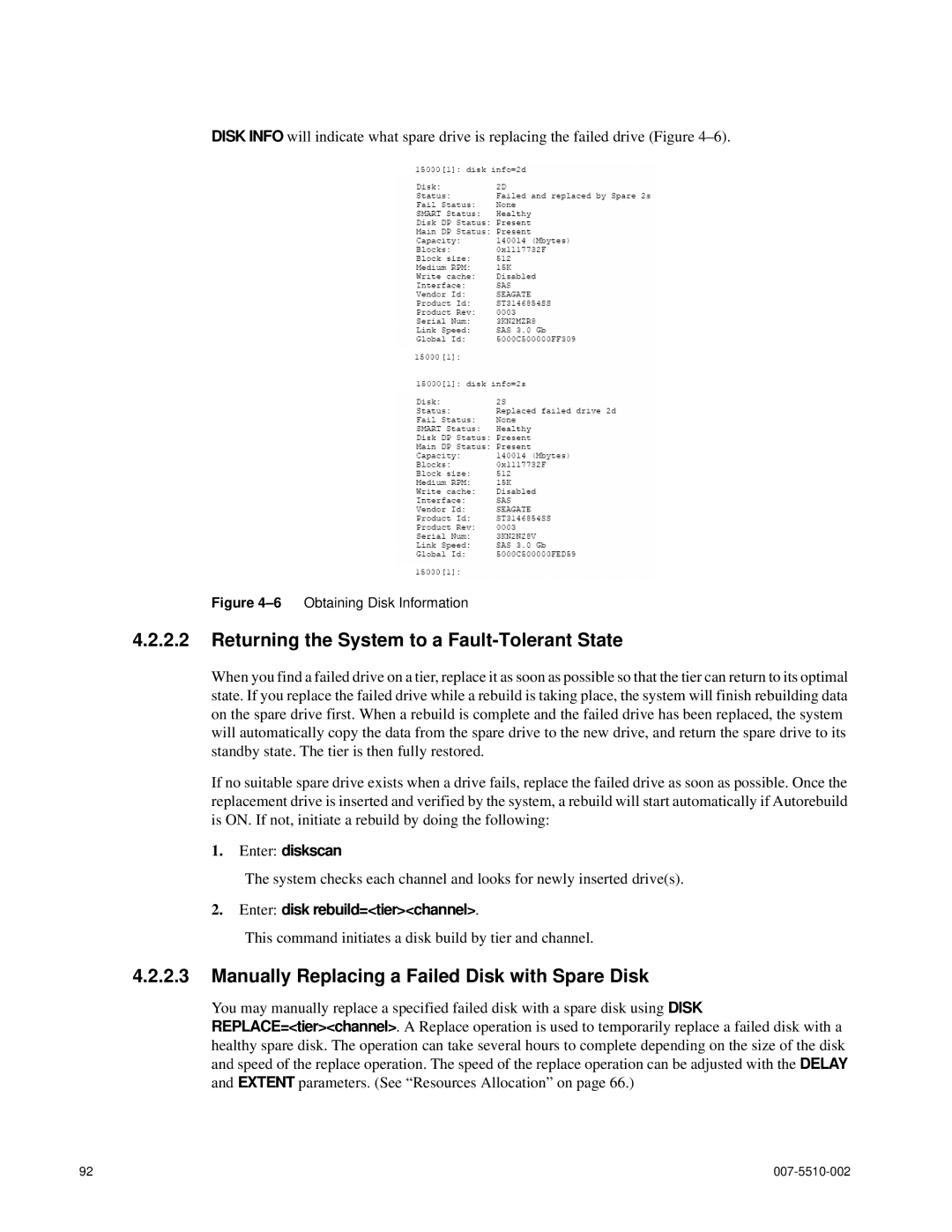
DISK INFO will indicate what spare drive is replacing the failed drive (Figure
Figure 4–6 Obtaining Disk Information
4.2.2.2Returning the System to a Fault-Tolerant State
When you find a failed drive on a tier, replace it as soon as possible so that the tier can return to its optimal state. If you replace the failed drive while a rebuild is taking place, the system will finish rebuilding data on the spare drive first. When a rebuild is complete and the failed drive has been replaced, the system will automatically copy the data from the spare drive to the new drive, and return the spare drive to its standby state. The tier is then fully restored.
If no suitable spare drive exists when a drive fails, replace the failed drive as soon as possible. Once the replacement drive is inserted and verified by the system, a rebuild will start automatically if Autorebuild is ON. If not, initiate a rebuild by doing the following:
1.Enter: diskscan
The system checks each channel and looks for newly inserted drive(s).
2.Enter: disk rebuild=<tier><channel>.
This command initiates a disk build by tier and channel.
4.2.2.3Manually Replacing a Failed Disk with Spare Disk
You may manually replace a specified failed disk with a spare disk using DISK REPLACE=<tier><channel>. A Replace operation is used to temporarily replace a failed disk with a healthy spare disk. The operation can take several hours to complete depending on the size of the disk and speed of the replace operation. The speed of the replace operation can be adjusted with the DELAY and EXTENT parameters. (See “Resources Allocation” on page 66.)
92 |
|
